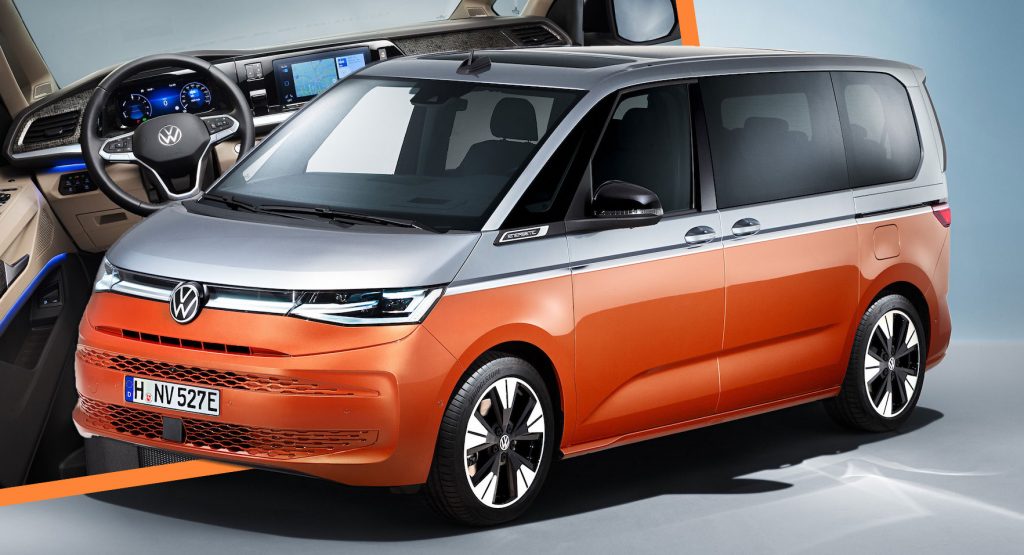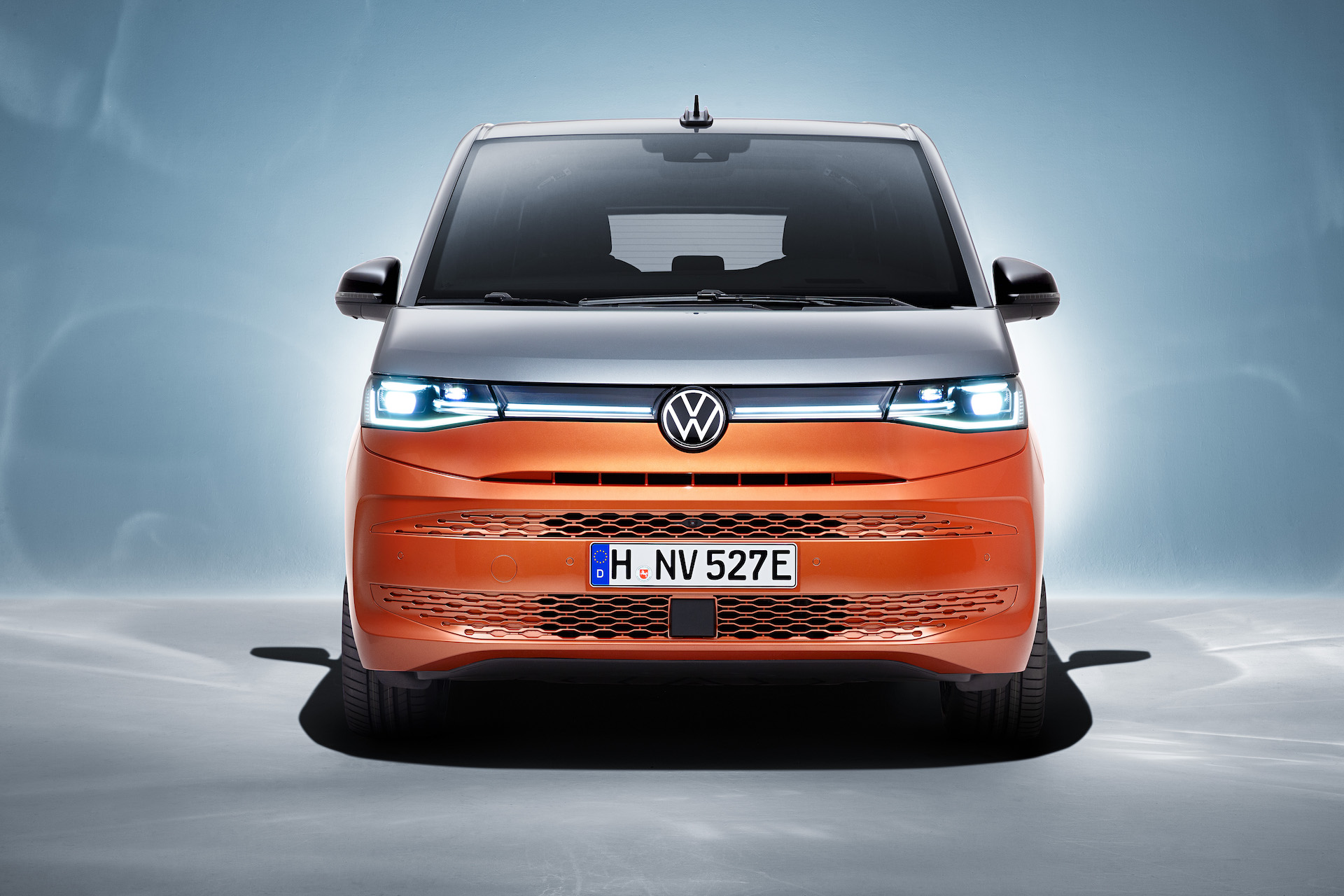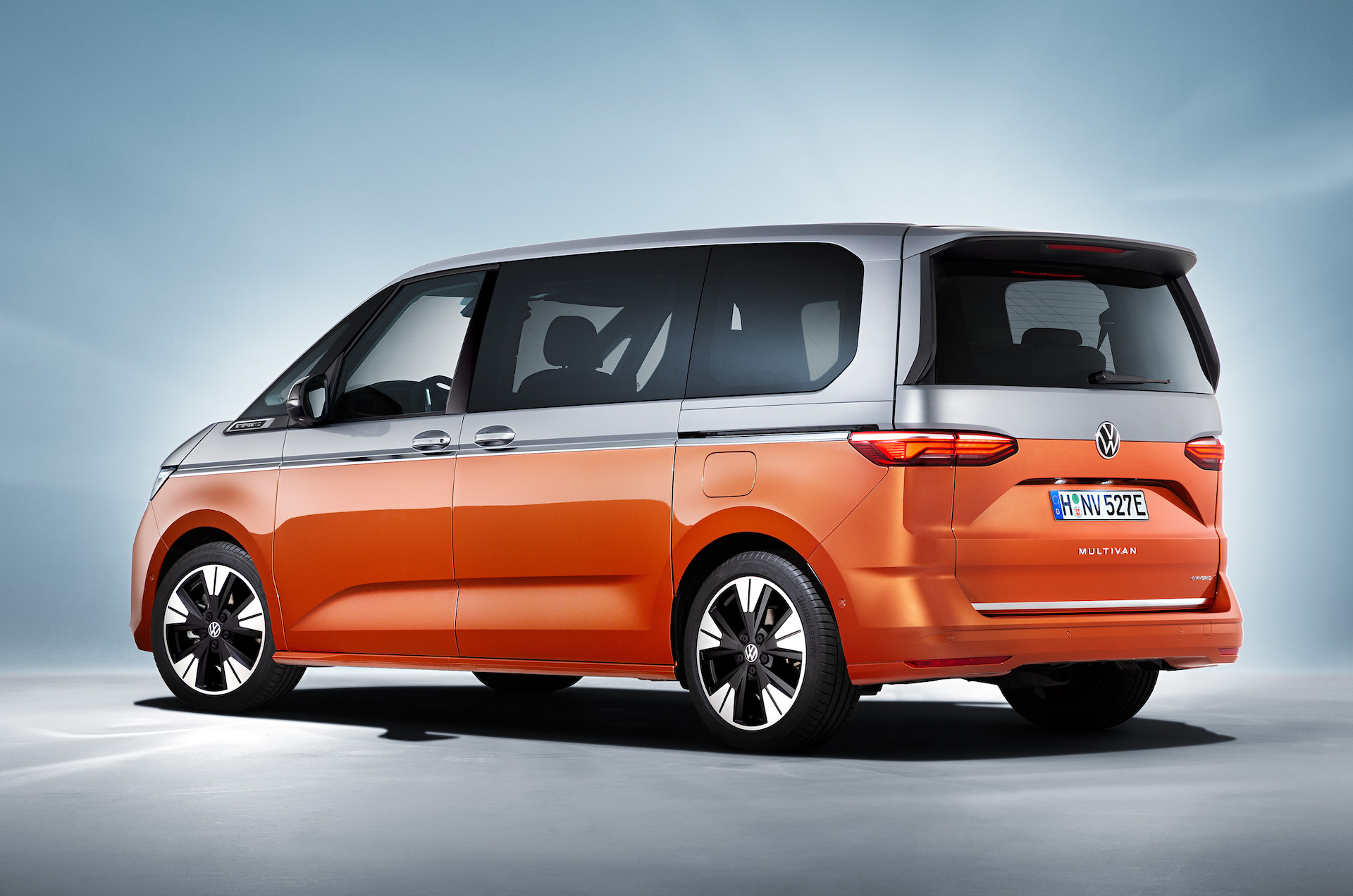The world’s longest running people mover is moving into the electric age. The big news for the T7 version of Volkswagen’s Type 2 (confusing, we know) is the appearance of plug-in hybrid power for the first time.
That’s been made possible by the luxury people-carrier version of the T7 moving to the same MQB platform found under numerous VW Group family cars, from the Audi A3 to the small Volkswagen Caddy van. Plumbers, builders, mountain bikers and other buyers looking for a panel van will have to make do with the older T6, which continues in parallel.
Visually, though, and despite being wider and lower than the outgoing model, the T7 doesn’t depart radically from the styling template laid out by the T6 introduced back in 2015, or its predecessor, 2003’s T5. But this time the base of the windshield is pushed so much further forward there’s now an extra window between the door and the A-pillar, giving more of a classic MPV look.
The hood is flatter, too, and the full-width grille and headlamps give the T7 a more dynamic, contemporary look, while also, Volkswagen says, tipping a hat to the classic boxy T3-generation bus built between 1979 and 1991. VW’s designers have opted to paint the air intakes in body color, another retro reference to the old air-cooled Kombis that also happens to hint at the electric part of the PHEV drivetrain.
Related: VW Confirms ID.Buzz Electric Van Is Coming To America In 2023
LED headlights are standard (in the UK, at least), while the trick IQ.Light matrix adaptive lamps now common on European cars but still outlawed in the US, are optional. Tick that box and you also get an illuminated LED bar across the grille.
Let’s take a dive inside
VW has also been hard at work on the interior of the T7, whose seven seats are now 25 per cent lighter, making them much easier to slide or remove. The second row of seats can be swivelled 180-degrees so you can actually see your teenage kids ignoring you when you stop for lunch on a long trip, and the third row, previously a bench, now consists of individual removable seats.
The smartest feature though, is the new adjustable height table, which can be moved between any of the seating rows, or slid right through to the front where it becomes a center console.
Up front, there’s more pace than before because an electric parking brake and shift-by-wire DSG twin-clutch transmission are standard, leaving a completely flat floor. And things get more tech-focused from there, thanks to the ‘Digital Cockpit’ instrument pack, wireless smartphone charging tray and an optional head-up display.
You can even order a panoramic sunroof, IQ.Drive Travel Assist, which combines Adaptive Cruise Control and Lane Assist for semi-autonomous driving, or a 14-speaker, 640-watt Harmon Kardon sound system. And We Connect Plus allows you to unlock your T7, or set its optional auxiliary heater remotely via your smartphone. In short there’s more luxury and technology here than even the most LSD-addled brain of an original VW bus-driving hippy could possibly hallucinate.
Hybridization
More power, too. The T7 launches with a choice of 134 hp 1.5-liter TSI or 201 hp 2.0-liter TSi gasoline fours, while a 148 hp diesel joins the line up next year. All three drive the front wheels through a seven-speed DSG.
But the headline grabber is that PHEV option. Called the eHybrid, it mates a 148 hp 1.4-liter four with an 85 kW electric motor for a total of 215 hp and the ability to cover ‘short, urban trips’ in EV mode, though exactly how short, VW hasn’t yet specified. Interestingly, the hybrid makes do with a six-speed DSG.
Commercial versions of the old T6 panel van were available with full electric power, though an 82-mile range and 17.4-second zero to 62mph time would hardly impress a Chevy Bolt driver, let alone a Tesla owner. But this one won’t get a full EV option. That’s the job of the ID.Buzz that’s due to be unveiled in late 2022.
And finally, the Multivan gets a new name, or at least it does in the UK, where it was previously known as the Caravelle. Other markets are already familiar with the Multivan badge, but not the US, which hasn’t received a VW bus since the T4 ‘EuroVan’ was retired in 2003. North America isn’t likely to get the T7 either, but the fact that the electric ID.Buzz has been confirmed for the US for 2023, more than makes amends.














